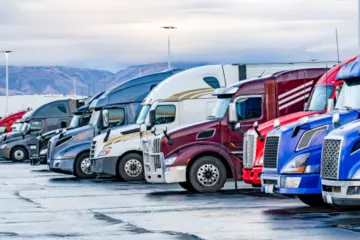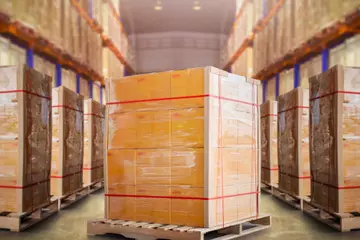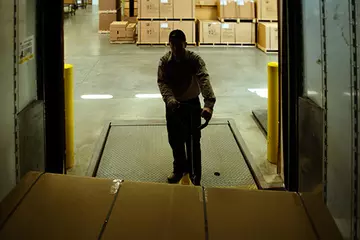Answering your top truckload questions
Are you curious about full truckload (FTL) shipping and how it can benefit your business? Get answers to common questions about truckload freight to help you understand the process and make well-informed decisions.
New to this shipping method? Read our truckload shipping guide for more information.
Should I ship full truckload (FTL)?
Full truckload shipping can be a great solution for large volumes of goods because it’s usually more cost-effective than less-than-truckload (LTL) shipping. FTL also offers benefits like reduced handling, often making it preferable for fragile or valuable goods.
However, the decision to ship full truckload comes down to your specific needs. Consider using it if your shipments fall into one or more of these categories:
- Large volume shipments that fill an entire truck or trailer
- Time-sensitive freight
- Fragile or high-value goods that you prefer to have travel alone
- Higher weight freight that makes less-than-truckload less economical
- Specialized handling or equipment requirements
- Consistent or predictable shipments
What kind of equipment is used in FTL shipping?
FTL equipment includes dry van trailers, flatbed trailers, refrigerated trailers (reefer), step deck or drop deck trailers, and other specialized equipment (tankers, car haulers, etc.). Choosing the right option for your load depends on the commodity, dimensions, weight and type of care required. Learn more about freight equipment types.
How much freight can each equipment type haul?
Here are some general guidelines for the capacity of common truckload equipment (note that capacity can vary depending on the specific trailer dimensions, axel weight limits and regional regulations):
-
Standard 53-foot dry van: capacity of approximately 45,000 pounds or around 3,500 to 4,000 cubic feet of volume.
-
Standard flatbed trailer: capacity of approximately 40,000 to 48,000 pounds and can accommodate oversized or irregularly shaped cargo.
-
Reefers: capacity of approximately 45,000 pounds or 3,500 to 4,000 cubic feet of volume.
-
Step deck or drop deck: capacity of approximately 40,000 pounds to 48,000 pounds.
How many pallets can fit in a full truckload?
Typically, a dry van can accommodate 26 standard pallets on the floor (52 double-stacked) and hold a maximum of 45,000 pounds.
Do I have to use the entire trailer?
No, you don’t have to use the entire trailer. The term “full truckload” refers to the fact that the entire capacity of the truck or trailer is dedicated to your shipment, but you have the flexibility to use the truck’s capacity as needed. Using only some of the trailer is referred to as a partial truckload shipment.
What’s the best way to load truckload freight?
Loading truckload freight involves careful planning to distribute weight evenly and comply with axle weight limits. When it comes to loading pallets into a trailer, there are four patterns that are commonly used:
-
Straight (block) configuration: Pallets are loaded in straight rows across the width of the trailer, from one side to the other.
-
Turned (staggered) configuration: Pallets are turned 90 degrees from the straight configuration to alternate the direction of the pallets row by row.
-
Pinwheel configuration: Each pallet is placed with one corner facing the center of the trailer.
-
Distributed weight configuration: Heavier pallets are placed toward the bottom, with lighter ones on top to maintain stability.
How fast is FTL freight, and what factors impact transit time?
The speed of delivery for full truckload freight varies based on distance, route and road conditions, seasonal demand, border crossings and customs, driver hours of service, carrier capacity and scheduling.
Generally, a driver who averages 55 miles per hour during an 11-hour shift can cover 605 miles daily. To get an estimate of how long an FTL shipment may take to deliver, you can divide the mileage from pickup to delivery by 600.
How does fuel impact FTL rates?
Fuel prices are constantly changing, which directly impacts fuel surcharges. These surcharges, often included in or added to your truckload rate, cover the fuel cost for the driver. When diesel prices increase, fuel surcharges rise accordingly, leading to higher overall truckload rates. Explore truckload cost factors.
How do I get a quote?
Many transportation companies, including ArcBest, allow you to submit your details online for an instant quote. If you prefer to speak to someone, you can also get rates by phone or email.
You’ll need to provide shipment details, including origin and destination addresses, preferred pickup and delivery dates, the type of goods being shipped, weight, dimensions, and any specific requirements or special handling instructions.
What truckload services does ArcBest offer?
ArcBest is a leader in full truckload shipping, with solutions including dry van, flatbed, refrigerated and rail. With a growing network of approved capacity providers — including those offered by our truckload service, MoLo — we can cover your loads.







